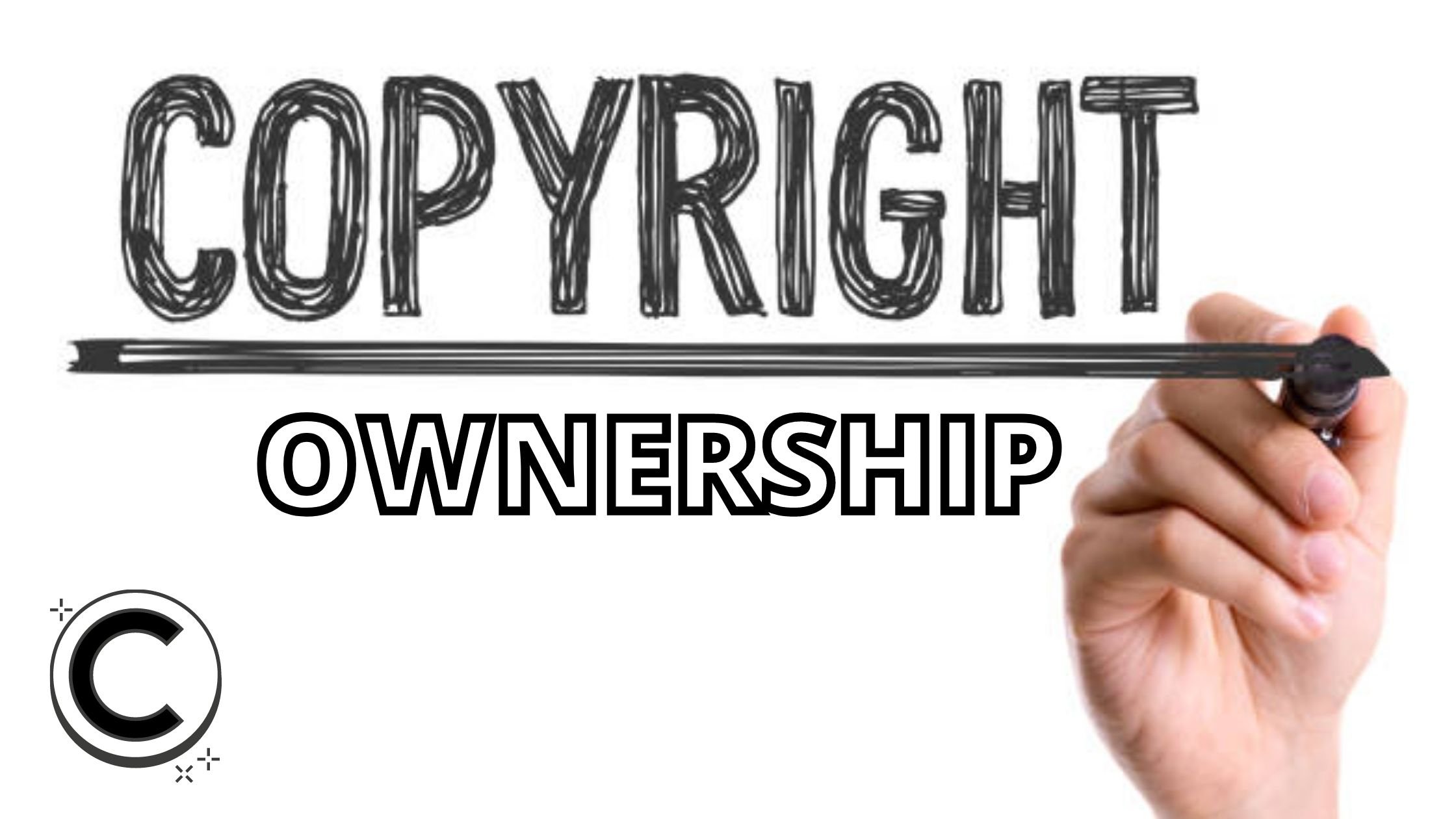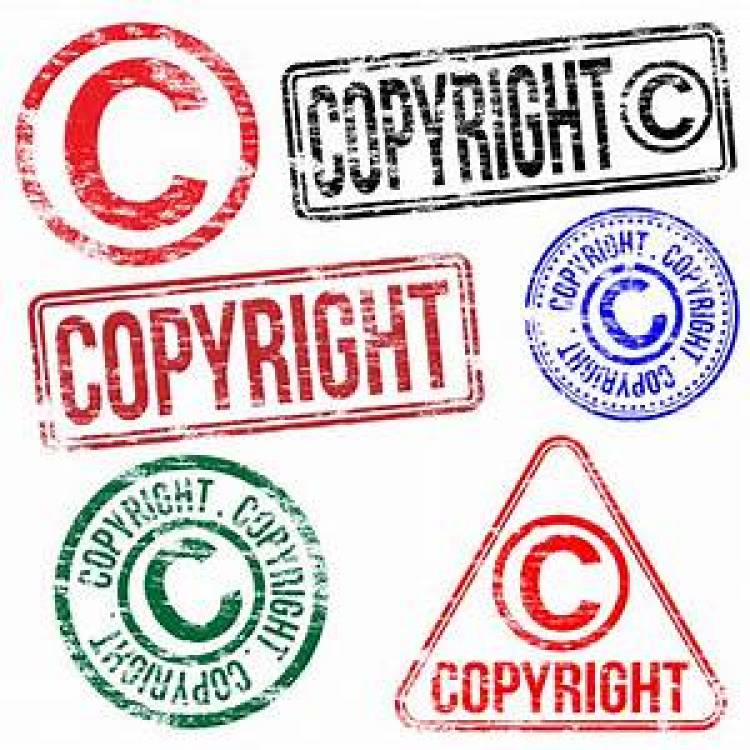COPYRIGHT OWNERSHIP
In general, we all know what is the meaning of copyright? For a quick revision in very simple words copyright means the originator is having the legal rights for a specific number of years, to print, publish, perform, film, or record literary, artistic, or musical material.

In general, we all know what is the meaning of copyright? For a quick revision in very simple words copyright means the originator is having the legal rights for a specific number of years, to print, publish, perform, film, or record literary, artistic, or musical material.

Know more about what is Copyright and its advantages of registration, see the video below-
COPYRIGHT OWNERSHIP
Copyright ownership in a work at first vests in the maker/creator of the work. In the event that the work is a joint work, work with at least two makers, the makers are co-proprietors of the copyright in the work.
In specific situations, the copyright in a work isn't allowed to the individual who made the work. On account of a "work made for hire," the maker's manager or the individual for whom the work was made is viewed as the owner for motivations behind the Copyright Act.
Copyright ownership qualifies the copyright proprietor for: practice the restrictive rights conceded under Section 106, to approve others to practice any of those select rights and to keep others from practicing any of those elite rights.
One confusion may arise between two-term OWNERSHIP OF THE COPYRIGHTS AND OWNERSHIP OF A COPY. Let’s try to make it clear by the distinction of these two terms:
The basic differentiation between the owner of the copyright in a work and ownership of the copyright of a work is that in the Ownership of a Copy – at the end of the day, the material article wherein a copyrighted work is typified, similar to a book or DVD — conveys with it no interest in the copyright.
Work made for Hire
Much of the time, copyright ownership at first lives in the individual who made or created the work. In any case, there are two examples where this isn't the case:
(1) where a work is made or created by a representative/ employee inside the extent of business or employment, and
(2) certain works that have been extraordinarily requested or charged. In these two cases, the business or employer (not the maker) is viewed as the copyright owner/proprietor.
These kinds of works are classified as "works made for hire."
Elements used to decide if a work is set up by a worker or employee inside the extent of their business: The accompanying elements are applicable to deciding if a work is set up by a representative or employer inside the extent of their work:
-
the aptitude needed to make the work;
-
the source of the essential instrumentalities and devices;
-
the area of the work;
-
the span of the connection between the parties;
-
regardless of whether the employing party has the option to dole out extra ventures to the recruited party;
-
the degree of the employed party's tact over when and how long to function;
-
the technique for installment;
-
the employed party's function in recruiting and paying colleagues;
-
regardless of whether the work is essential for the customary business of the employing party;
-
regardless of whether the employing party is good to go;
-
the giving of worker benefits;
-
the assessment treatment of the employed party.
Regardless of whether the work was made by a worker inside the extent of business, the business and representative maker or creator may concur recorded as a hard copy that the worker will hold copyright ownership for work. Nonetheless, a work that was not made inside the extent of a maker's business can't be made into a work made for hire on available via arrangement/ agreement.
What kinds of work exceptionally requested or appointed might be works made for hire?
For a work to be viewed as a work made for hire, the parties should explicitly concur in a composed instrument endorsed by them that the work will be viewed as a work made for hire and the work should be a work extraordinarily requested or charged for use as a:
-
a commitment to an aggregate work;
-
some portion of a movie or other varying media work;
-
interpretation;
-
strengthening work;
-
gathering;
-
instructional content, test, or answer material for a test; or
-
map book.
A "strengthening work" is a work ready for distribution as an optional extra to a work by another writer to present, closing, outlining, clarifying, reconsidering, remarking upon, or aiding the utilization of the other work, for example, forewords, afterwords, pictorial delineations, maps, diagrams, tables, the article notes, melodic plans, answer material for tests, lists of sources, appendixes, and records. An "instructional content" is a scholarly, pictorial, or realistic work ready for distribution and with the end goal of utilization in methodical instructional exercises.
Differentiation Between a Work Made for Hire and an Assignment
There are conceivably critical lawful ramifications to having a copyrighted work named a wok made for hire, rather than a task or assignment of copyright. In particular, paying little mind to the conditions of an assignment or task, a maker or creator can end an assignment/task and recover the possession interest in a copyrighted work by practicing their end rights. In any case, if the association claims the copyrighted work as a work made for hire, the rights are possessed for the full term of security and can't be ended.
Joint Works
A joint work is one in which a work is set up by at least two creators/makers with the information and expectation that their commitments be incorporated into indistinguishable or reliant pieces of a unitary entirety. By and large, for a supporter to qualify as a joint creator, the commitments of every patron should be freely copyrightable. The creators of a joint work are co-proprietors of copyright in the work.
BY-
ANANYA PANDEY












